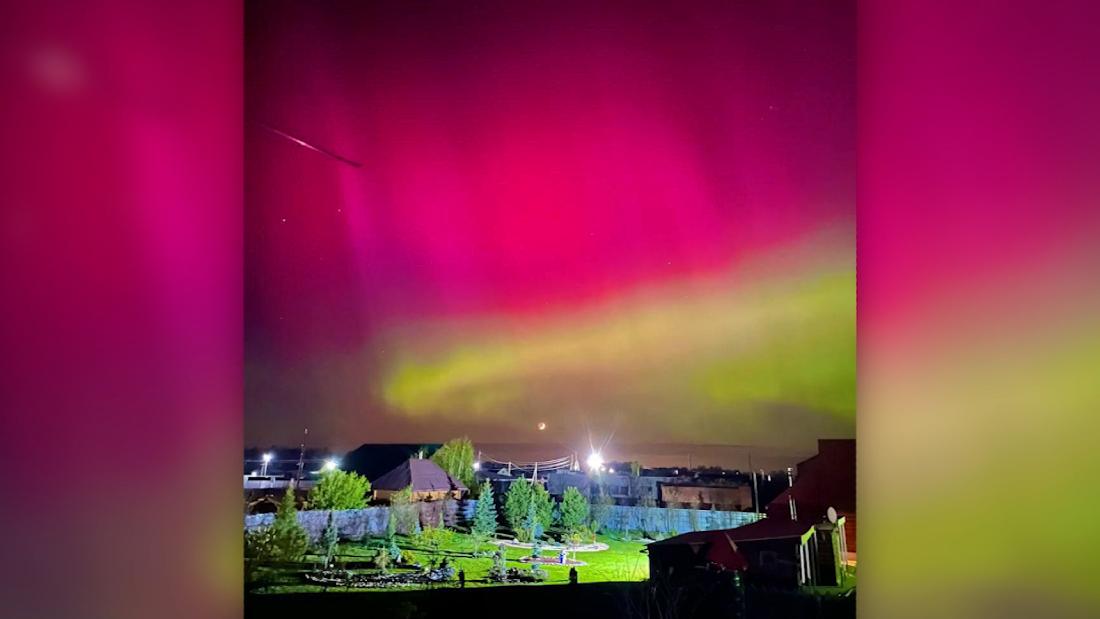On Friday, Earth was struck by the most powerful solar storm in over two decades, indicating a celestial spectacle and concerns about disruptions to communication and power infrastructure. A cosmic onslaught that promises awe-inspiring auroras and ominous threats to critical infrastructure. This Solar Storm is indicated by the National Oceanic and Atmospheric Administration (NOAA).

Also Read: Climeworks Opens World’s Largest Carbon Removal Plant in Iceland
At approximately 1600 GMT on Friday, the Earth’s atmosphere was shattered by a series of coronal mass ejections (CMEs), eruptions of plasma and magnetic fields from the Sun’s roiling surface.
The NOAA escalated the alert to an “extreme” geomagnetic storm, akin to the infamous “Halloween Storms” of 2003 which plunged regions into darkness and disrupted infrastructure.
From the verdant landscapes of Tasmania to the storied shores of Britain, the night sky blazes with celestial fervor.
Social media is with images capturing the ethereal dance of the Northern Lights, a display visible even to the naked eye. This rare celestial ballet ignites the imaginations of millions.
Satellite operators, airlines, and power grid authorities stand vigilant, implementing precautionary measures to safeguard against the tempest’s disruptive force.
Elon Musk’s Starlink satellites, orbiting in precarious proximity, confront the ultimate stress test, their resilience under scrutiny amidst the solar tempest’s fury.
The CMEs’ gradual advance shows a sustained assault on Earth’s magnetic field, with velocities averaging 800 kilometers per second.
This tempestuous onslaught emanates from a colossal sunspot cluster, dwarfing our planet in magnitude. As Earth hurtles through the throes of solar maximum, scientists decipher the storm’s trajectory navigating the balance between cosmic spectacle and terrestrial peril.
High-frequency radio signals essential for aviation and telecommunications, teeter on the brink of disruption, susceptible to the storm’s electromagnetic turbulence.
The potential for blackouts looms ominously prompting authorities to issue warnings and urging preparedness among the populace. Amidst the technological tumult, echoes of the Carrington Event of 1859 resound.
The solar storm is by several coronal mass ejections (CMEs), eruptions of plasma and magnetic fields from the Sun, commenced after 1600 GMT.
Also Read: Scientists Discover Cause of Brightest Ever Gamma-ray Burst
NOAA’s Space Weather Prediction Center upgraded it to an “extreme” geomagnetic storm, reminiscent of the “Halloween Storms” in 2003.
Spectacular auroras were witnessed across northern Europe and Australasia, capturing observers and igniting social media.
Tasmania, Australia experienced an ethereal display, while northern lights were anticipated to reach as far south as Alabama and northern California in the United States.
Authorities alerted satellite operators, airlines, and power grid managers to brace for potential disruptions. Elon Musk acknowledged the event’s magnitude, highlighting the resilience of his Starlink satellites.
NOAA advised capturing the night sky with cell phone cameras even if auroras were not visible to the naked eye.
Geomagnetic storms can induce currents in power lines and pipelines, posing blackout risks and engineering challenges.
Spacecraft are vulnerable to radiation though the Earth’s atmosphere offers protection. NOAA’s Space Weather Prediction Center warned of temporary signal loss for high-frequency radio users.
The Carrington Event of 1859 remains the benchmark for geomagnetic storms causing disruptions to telegraph lines. Advancements in technology and preparedness tackle the likelihood of such extreme outcomes today.
NOAA issued a rare solar storm warning, anticipating continued activity with impacts on critical infrastructure. The current solar storm is classified as G5 (extreme) stems from a cluster of sunspots 16 times wider than Earth.
Also Read: Scientists Discovered Colossal Ocean 700km Below Earth’s Crust






















